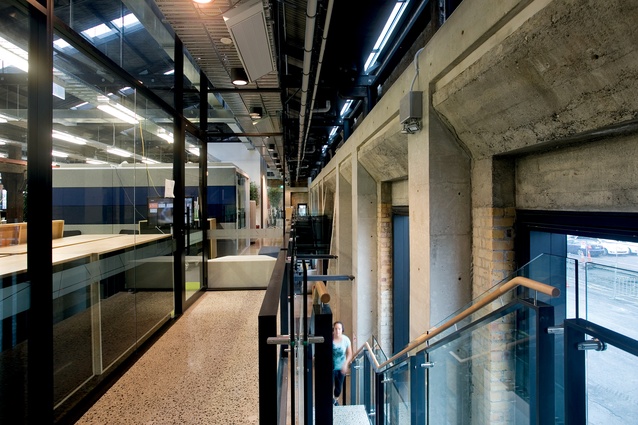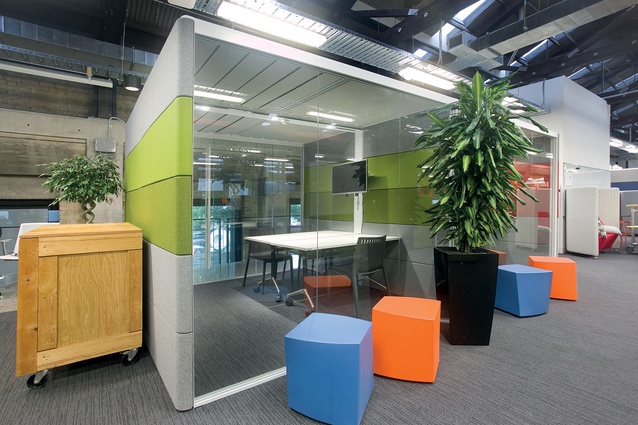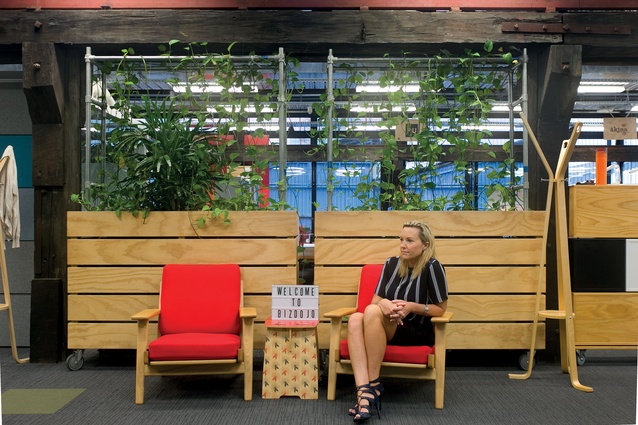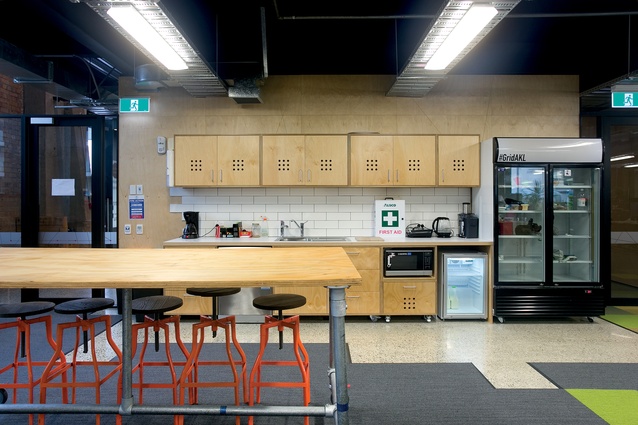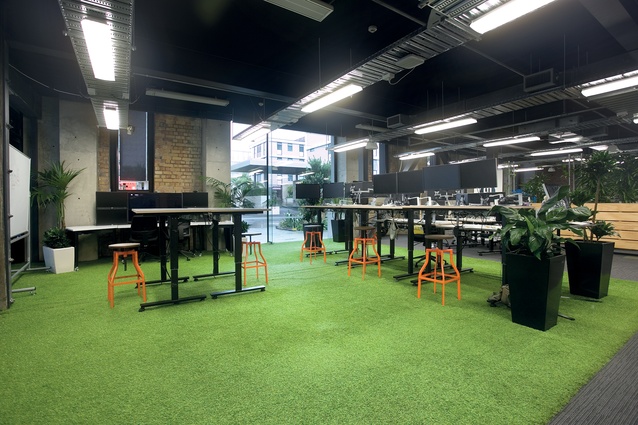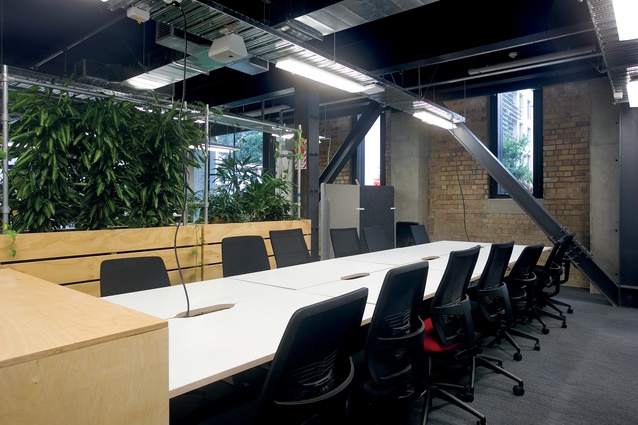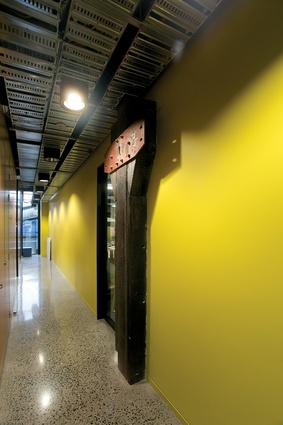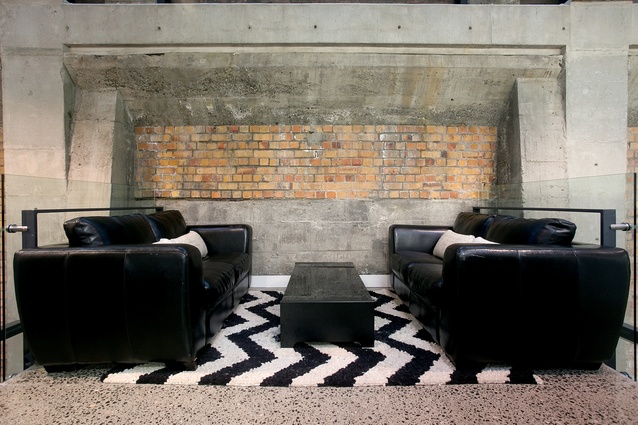Cradle of disruption
GridAKL, Auckland’s innovation precinct on Wynyard Quarter, finds a new home in the Lysaght Building. Sarosh Mulla explores its interior.
Innovation is a difficult thing to plan for in some ways, especially in the New Zealand cultural context, where building the unbelievable in the back shed has given us some of our great heroes.
Today, we associate innovation not necessarily with building ever-faster machines (think Bill Hamilton’s jetboat and John Britten’s motorcycle) but, instead, with the creation of more ephemeral constructs like software, programs for social justice and, of course business. The mantra of innovation, since the publication of Clayton M Christiansen’s book The Innovator’s Dilemma in 1997, has become a central tenet of business culture. In this context ‘innovation’ has supplanted the term ‘new’ – not necessarily ‘novel’, but ‘new’. Seemingly every start-up company is an innovator, a highly disruptive force within the marketplace, and, as is often the case, the spaces designed for business have reflected its cultural ideals.
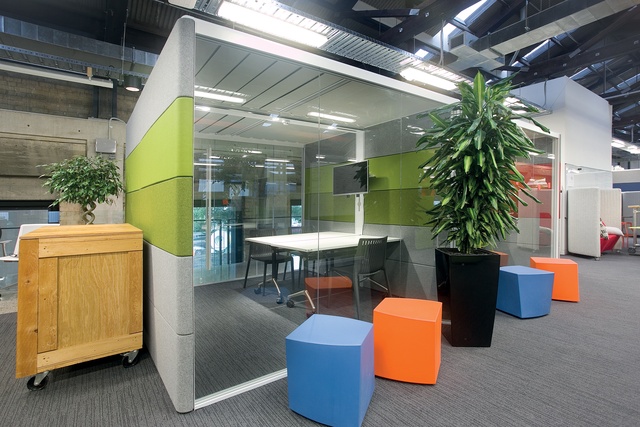
Innovation isn’t confined to the object anymore and this has meant that the facilities required for innovation have left the lonely back shed in favour of more salubrious digs. Universities have, of course, always been home to research and innovation in this way. Although, as a society, it is only recently that we have made a significant effort to provide spatial and technical infrastructure for innovation outside of universities. It is in these spaces that the Christiansen’s brand of disruptive innovation has been wholeheartedly adopted by young businesses.
The most significant change in our approach to innovation in recent years has come through the design of innovation precincts, rather than solely focusing on individual innovators. The multiplying effect of gathering together those with diverse skills, and a shared desire to effect change, has become recognised as being one of the most important factors in fostering this form of innovation. Creating the conditions for this gathering to take place in an effective and positive way has been taken up by city councils around the world.
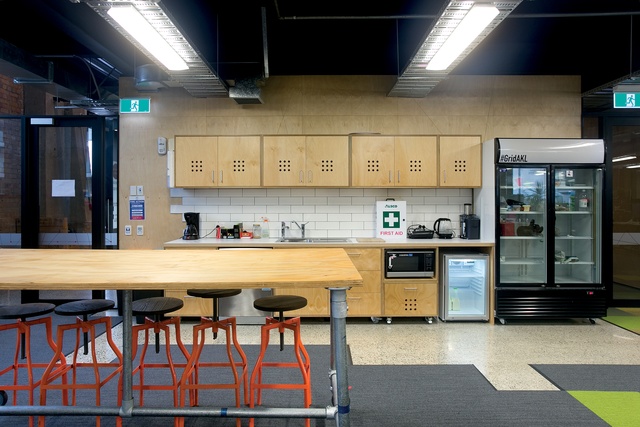
Internationally, cities like London have created widespread networks for the development of digital products, while also investing in specific neighbourhoods as hot spots of innovation. The East London-based TechCity technology cluster is an example of such a precinct. In this case the British Government has overlaid a brand identity on a collection of technology companies that had organically found themselves located in the same area.
Closer to home, innovation precincts have been established in both Wellington and Christchurch with a more direct approach to investing in physical infrastructure, managed as public/private partnerships. In Auckland the GridAKL development follows this approach. The Grid, a new precinct at Wynyard Quarter, is beginning to take shape with a collection of tech start-up businesses gathered together in the newly refurbished Lysaght Building. The development is driven by a combination of organisations including ATEED (Auckland Council’s Economic Development arm) and shared-space entrepreneurs BizDojo.
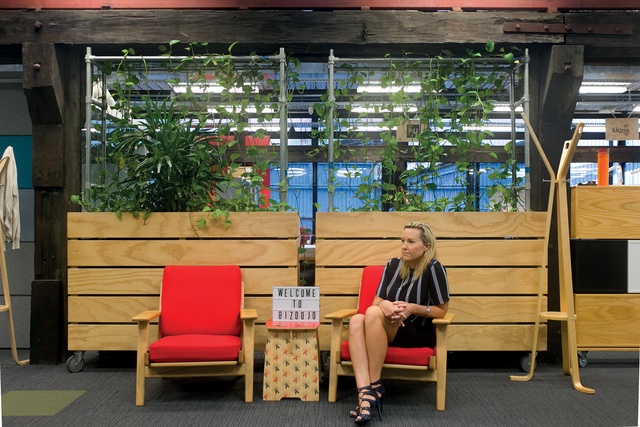
The location of GridAKL at Wynyard Quarter is in some ways counter-intuitive, particularly when you look at the economic conditions of successful creative precincts. The common thread through all of those successful examples is affordable rent, not proximity to the water’s edge. The affordability of space at GridAKL in the long term in a rapidly gentrifying area such a Wynyard Quarter will be difficult to sustain. But, for the moment, and unusually for this type of function, an innovation incubator has managed to become one of the foundation uses of a reimagined part of the city.
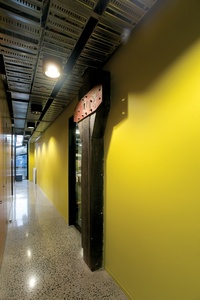
The Lysaght Building is the first permanent space for the Grid and has been designed specifically as a collaborative shared workspace for start-ups. The project is based on the refurbished shell of the 1920s John Lysaght Steel Company building. Warren and Mahoney has carried out a restrained and skilful renovation of the base building, retaining much of its original street presence and the beauty of its original timber roof structure. Inside, Spaceworks have applied an interior design that aims to facilitate the rapidly changing needs of the young companies located in the building. This includes a huge array of desk and meeting options which range from acoustically baffled pods through to lightweight hot-desking choices.
On the ground floor, visitors enter into a public café and flexible event space. Coffee, as usual, is at the heart of the planning. This space includes a technology showcase powered by Huawei, a Grid partner. This series of screens provides a glimpse into the products that the start-ups are creating. The event spaces are conceived as flexible areas with lightweight stackable furniture, reconfigured regularly. The palette of materials picks up dark tones in the existing industrial frame of the building and then introduces lighter touches of timber in the form of plywood wall linings and cabinetry details.
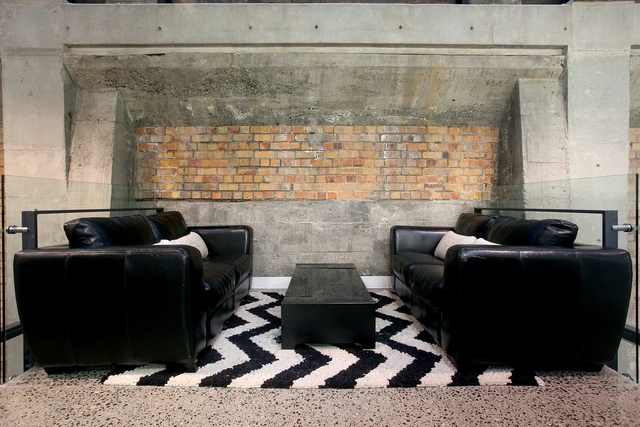
On the floor above, the large, open-plan workspace is arranged by the acoustic requirements of the businesses that share the space. Team-based sales and marketing firms are gathered toward a large open kitchen (where, again, coffee is the key focus). This part of the room includes what essentially feels like a living room, albeit scaled for a commercial interior. Music is played over integrated speakers into the room from this end. As one progresses down the long length of the room, the space becomes quieter and more focused, culminating in a series of desks for the programmers, those of the most solitary and quiet character.
The tone of the interior is highly active and, in a way, ad hoc. This isn’t the slick vision of commercial interior design that dominated in the 1950s (think Mad Men), or the pinstripe and testosterone-filled cubicles of the 1980s (think Wall Street). This is something much more akin to the dorm room turned corporate headquarters (think The Social Network), which feels appropriate. The diverse variety of tenants, user requirements and business models is reflected in the array of furniture types and planning arrangements. While innovation may itself be a process that requires risk, uncertainty and a degree of messiness, the design of spaces at the Grid manages to cope with this and deliver workable space with consistent flexibility.

